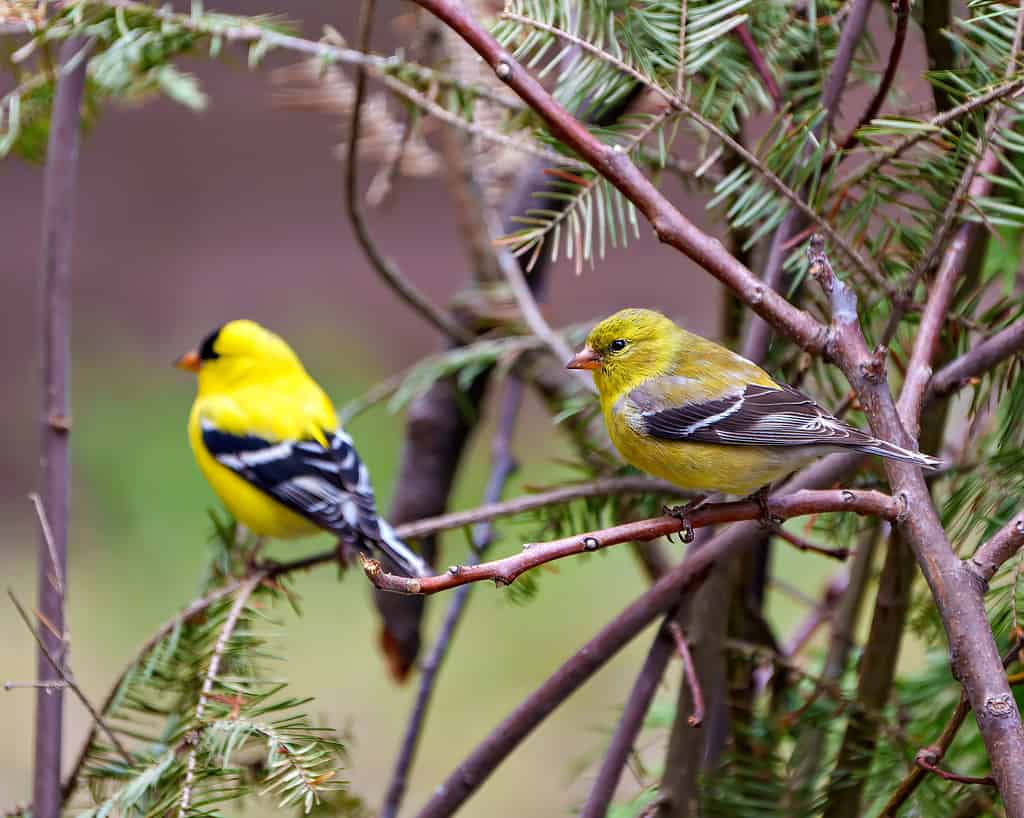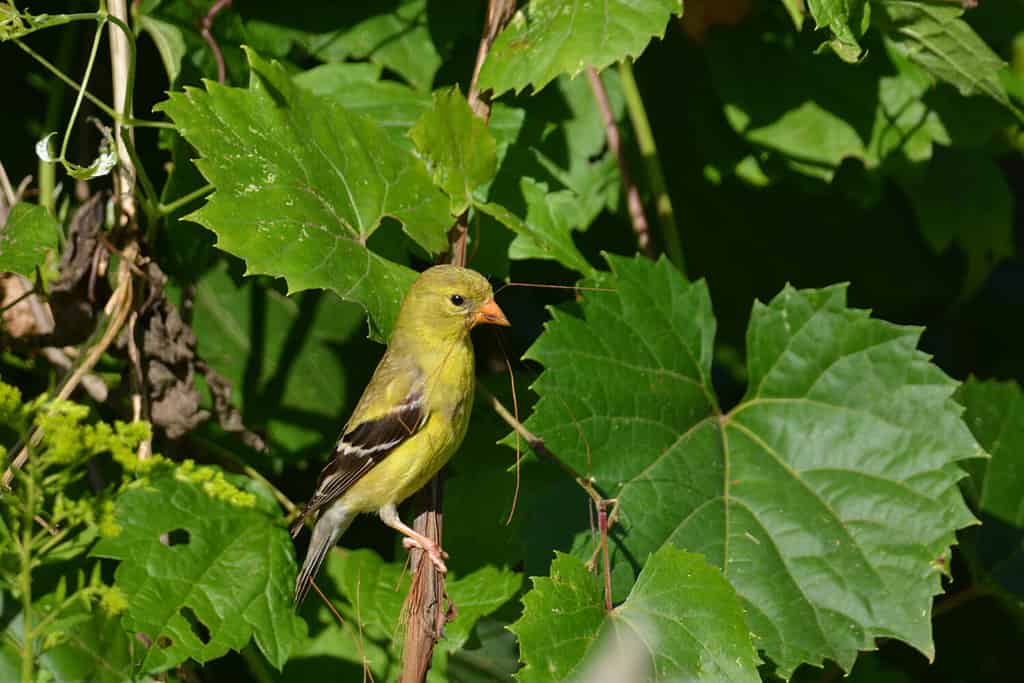Finches are a widespread family of birds, mostly known for their beautiful songs and colors. Goldfinches are a common songbird throughout North America. The American goldfinch prefers to nest in shrubbery, making them difficult to spot. The lesser goldfinch, alternatively, makes its nest in trees. Here, we’ll list the areas where you’re likely to find goldfinch nests, when you might spot them, and what to look out for.
Nesting Location

A breeding male and female American goldfinch look different than their nonbreeding counterparts.
©Rejean Bedard/iStock via Getty Images
Since these two species of birds don’t really have an overlapping range, you don’t need to worry about having to differentiate between the two. However, you’ll want to avoid confusing them with other yellow and black birds that might be in the area.
American Goldfinch
While you can find an American goldfinch (Spinus tristis) just about anywhere in the United States, they’re present year-round in the northern half of the U.S. and during the breeding season in the Dakotas and northern areas of Minnesota. So, if you’re in the southern half of the U.S., you’re not likely to find goldfinch nests.
That said, if you live in an American goldfinch region, you don’t have to look high into the trees to find their nests. American goldfinches nest in shrubbery, usually near the top where vertical branches join. They are not too particular about nesting in any specific species or type of shrub. The shrubs they prefer are usually in open areas or prairies. The best time to find an American goldfinch nest is July-August.
Lesser Goldfinch
The lesser goldfinch (Spinus psaltria) is even more elusive than the American goldfinch. The southwestern states can see these birds during their breeding season, and Mexico has them year-round. Breeding season for these birds is from early spring to the middle of autumn.
You might find these bird’s nests in cottonwoods and willow trees, usually by a river or stream. Like the American goldfinch, the lesser goldfinch nest is at a connecting point between branches, but not a main branch. These nests are more concealed than the American goldfinch nest.
Nesting Materials

Female lesser goldfinch gather nesting materials to create their home.
©C. Hamilton/Shutterstock.com
Bird nests can vary widely in construction, materials, and shape depending on the bird species. The American goldfinch makes a cup-shaped nest that is made up of rootlets, plant fibers, and even spider silk to secure the nest to the branches. Interestingly, these nests are woven so expertly and tightly by the birds that they can even hold water! They’re usually around 3 inches wide and 2 inches deep.
The lesser goldfinch uses almost anything at its disposal: bark, leaves, and spiderwebs are all fair game. The nest has a lining of fur, feathers, or other fibers to help insulate and pad the nest. It is also around 3 inches wide and only about an inch deep.
For both species, the females make the nests. American goldfinches usually finish building their nest in about six days, while the lesser goldfinch might take up to eight days to finish hers. Additionally, the male lesser goldfinch usually stands guard while the building takes place. Alternatively, the female American goldfinch is on her own.
The photo featured at the top of this post is © Rabbitti/Shutterstock.com
Thank you for reading! Have some feedback for us? Contact the AZ Animals editorial team.






